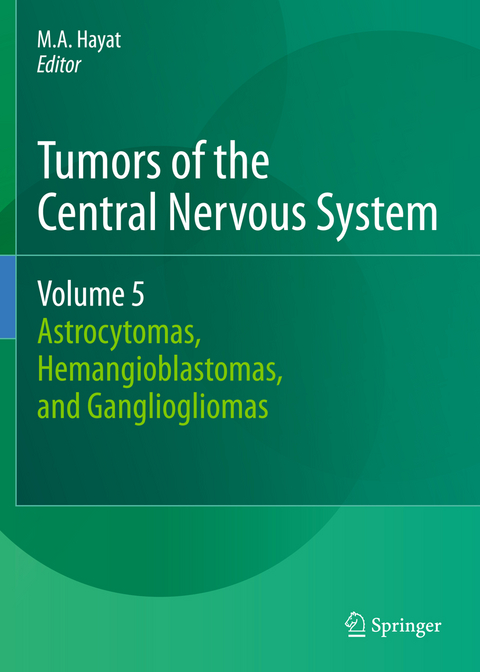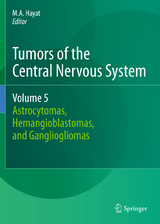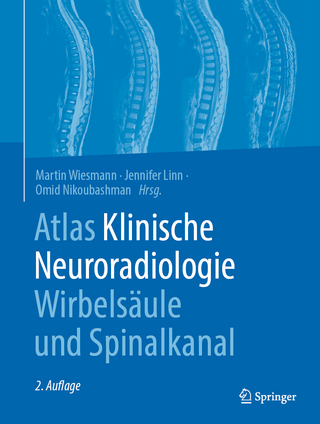Tumors of the Central Nervous System, Volume 5
The most recent developments in diagnostic and therapeutic aspects of Gliomas (glioblastoma) in the brain are presented. The importance of personalized medicine and clinical validation for targeted therapy are discussed. The identification of various types of biomarkers (determined by molecular genetics) is included, along with their advantages and limitations as markers in tumor detection and diagnosis. The identification and validation of brain cancer (glioblastoma) genes are discussed. The role of cancer stem cells in the initiation and persistence of malignant gliomas is explained; response of glioblastoma cancer stem cells to various growth factors, such as epidermal growth factor receptor kinase inhibitor, is explained. The use of surgical resection, chemotherapy (e.g., temozolomide), immunotherapy, and radiation therapy for glioblastoma patients is included. Biological impediments for chemotherapy and radiotherapy for malignant glioblastoma are pointed out. Standard (established) as well as newer imaging modalities (proton magnetic resonance spectroscopy) are discussed. Also included are proton magnetic resonance spectroscopy in intracranial gliomas, and the use of proton magnetic spectroscopic imaging in determining the infiltration zone in gliomas. The role of molecular signaling in the CNS cancer development is explained, including cell death signaling in glioblastoma multiforme.
The most recent developments in diagnostic and therapeutic aspects of Gliomas (glioblastoma) in the brain are presented. The importance of personalized medicine and clinical validation for targeted therapy are discussed. The identification of various types of biomarkers (determined by molecular genetics) is included, along with their advantages and limitations as markers in tumor detection and diagnosis. The identification and validation of brain cancer (glioblastoma) genes are discussed. The role of cancer stemcells in the initiation and persistence of malignant gliomas is explained; response of glioblastoma cancer stem cells to various growth factors, such as epidermal growth factor receptor kinase inhibitor, is explained. The use of surgical resection, chemotherapy (e.g., temozolomide), immunotherapy, and radiation therapy for glioblastoma patients is included. Biological impediments for chemotherapy and radiotherapy for malignant glioblastoma are pointed out. Standard (established) as well as newer imaging modalities (proton magnetic resonance spectroscopy) are discussed. Also included are proton magnetic resonance spectroscopy in intracranial gliomas, and the use of proton magnetic spectroscopic imaging in determining the infiltration zone in gliomas. The role of molecular signaling in the CNS cancer development is explained, including cell death signaling in glioblastoma multiforme.
Introduction. Part 1. ASTROCYTOMAS. DIAGNOSIS AND BIOMARKERS.- 1. Methylation in malignant astrocytomas.- 2. Deciphering the function of doppel protein in astrocytomas.- 3. Astrocytic tumors: role of antiapoptotic proteins.- 4. Astrocytomas: role of wnt/β- catenin/tcf signaling pathway.- 5. Subependymal giant cell astrocytoma: role of mtor pathway.- 6. Role of progesterone preceptor isoforms in human astrocytomas growth.- 7. Astrocytic tumors: role of carbonic anhydrase ix.- 8. Development of cysts in pilocytic astrocytomas: role of eosinophilic granular bodies (method).- 9. Role of synemin in astrocytoma cell migration.- 10. Diffuse astrocytomas: immunohistochemistry of mgmt expression.-11. Central nervous system germ cell tumors: an epidemiology review.- 12. Raf genes and mapk activation in pilocytic astrocytomas.- 13. Biomarker discovery in central nervous system neoplasms: past, present and future.- 14. Astrocytomas: role of taurine in apoptosis using magnetic resonance spectroscopy.- 15. Imaging of hypoxia-inducible factor-1-active regions in tumors using a pos and 123i-ibb method.- 16. Diffuse low-grade astrocytomas: p53-mediated inhibition of angiogenesis.- 17. Spontaneous regression of cerebellar astrocytomas mansoor foroughi, shibu pillai, and paul steenbok.- 18. Subependymal giant cell astrocytoma: gene expression profiling magdalena ewa tyburczy and bozena kaminska. THERAPY. - 19. Time- resolved laser induced fluorescence spectroscopy (trlifs): a tool for intra-operative diagnosis of brain tumors and maximizing extent of surgical resection.- 20. Magnetic resonance-guided laser interstitial thermal therapy for brain tumors.- 21. Nanotechnology-based therapy for malignant tumors of the central nervous system.- 22. Pilocytic astrocytoma: pthological and immunohistochemical factors affecting surgical treatment and surveillance.- 23. Pilomyxoid astrocytoma: chemotherapy hitoshi tsugu, shinya oshiro, fuminari komatsu, hiroshi abe,takeo fukushima, tooru inoue, fumio yanai, yuko nomura. PROGNOSIS.- 24. Astrocytomas: predicting survival and recurrence using cerebral blood volume measurements.-25. Electronic patient-reported outcome monitoring (eprom) in brain tumour patients. Part 2. HEMANGIOBLASTOMA.- 26. Intra-operative icg use in the management of hemangioblastomas.- 27. Hemangioblastoma cysts: diagnosis using fluorescence with 5-aminolevulinic acid.- 28. Hemangioblastoma-stereotactic radiosurgery anand veeravagu, bowen jiang, and steven chang. Part 3.GANGLIOGLIOMA.- 29. Gangliogliomas: molecular pathogenesis and epileptogenesis eleonora aronica and pitt niehusmann.- 30. Epilepsy-associated gangliogliomas: identification of genes with altered expression. Index.
| Reihe/Serie | Tumors of the Central Nervous System ; 5 |
|---|---|
| Zusatzinfo | XXVI, 290 p. |
| Verlagsort | Dordrecht |
| Sprache | englisch |
| Maße | 193 x 260 mm |
| Themenwelt | Medizinische Fachgebiete ► Chirurgie ► Neurochirurgie |
| Medizin / Pharmazie ► Medizinische Fachgebiete ► Onkologie | |
| Medizinische Fachgebiete ► Radiologie / Bildgebende Verfahren ► Radiologie | |
| Studium ► 2. Studienabschnitt (Klinik) ► Pathologie | |
| Schlagworte | Biomarkers for cancer • Cancer diagnosis, intraoperative • Cancer Therapy • Gene expression in cancer • Imaging of cancer |
| ISBN-10 | 94-007-2018-1 / 9400720181 |
| ISBN-13 | 978-94-007-2018-3 / 9789400720183 |
| Zustand | Neuware |
| Informationen gemäß Produktsicherheitsverordnung (GPSR) | |
| Haben Sie eine Frage zum Produkt? |
aus dem Bereich




